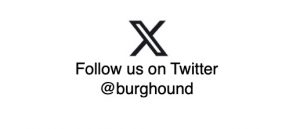The following is our approximate release schedule/contents for 2024 – check back frequently the week before an issue release since this page is updated regularly – even with the time of release a day or two before it is available:
2025:
CURRENT ISSUE: First Quarter Issue – 12 January 2025 @ 12:30 am PST – Issue 97 – 2023 (with some 2023s revisited) Côte de Nuits Reds; En Plus – More Current Release Burgundy; Current Release Champagne; and Progress Report – 36 Wine Horizontal from the 1978 Vintage
Second Quarter Issue – 21 April 2025 – Issue 98 – 2023 (with some 2022s revisited) Côte de Beaune Reds; Current Release Champagne; and En Plus – More Current Release Burgundy
Third Quarter Issue – 14 June 2025 – Issue 99 – 2023 (with some 2023s revisited) Côte d’Or Whites; Current Release California and Oregon Pinot Noir; En Plus – More Current Release Burgundy
Fourth Quarter Issue – 13 October 2025 – Issue 100- 2024 Chablis, Mâconnais and Côte Chalonnaise (with some 2023s revisited); En Plus – More Current Release Burgundy
2024:
First Quarter Issue – 13 January 2024 @ 12:00 pm PST – Issue 93 – 2022 (with some 2021s revisited) Côte de Nuits Reds; Progress Report #1: Domaine Perrot-Minot Chambertin and Close de Bèze Mini-Vertical; and Progress Report #2: 2023 “20 Years On” Grand Cru Mini-Horizontal
Second Quarter Issue – 7 April 2024 @ 4:00 pm PST – Issue 94 – 2022 (with some 2021s revisited) Côte de Beaune Reds; Current Release Champagne; Current Release California and Oregon Pinot Noir; current Release Champagne; and En Plus – More Current Release Burgundy
Third Quarter Issue – 15 June 2024 @10:00 am PST – Issue 95 – 2022 (with some 2021s revisited) Côte d’Or Whites; Current Release Champagne and Sparkling; Current Release California and Oregon Pinot Noir; En Plus; Progress Report – 1995 Grand Cru Horizontal; Quick Takes – 5 Brief Horizontals and Verticals
Fourth Quarter Issue – 11 October 2024 @ 10:00 am PST – Issue 96 – 2023 Chablis, Mâconnais and Côte Chalonnaise (with some 2022s revisited); Current Release California and Oregon Pinot Noir; Current Release Champagne; En Plus – More Current Release Burgundy; Progress Report: Richebourg vs RSV Throwdown; and Quick Takes: Random Luxury Champagne Notes
In addition, each issue normally includes (subject to change without notice):
- A Vintage Report
- Weather and Harvest
- The Wines
- What to Buy
- A Recap of the Previous Vintage
- The En Plus section includes wines that are reviewed/tasted outside of the theme of the current issue; but are normally reviewed (i.e. Burgundy – red and white, Chablis, Champagne, etc.)
- A Special Progress Report
TIMING OF WINE REVIEWS
It would be impossible for one person to offer reviews of thousands of burgundies all at once. Even if it was possible, Allen wouldn’t do it for the simple reason that no one can taste burgundies as early as some suggest and actually have a well-informed idea of what the wines are truly going to be like. Some reviewers taste at the en primeur tasting in London, but most serious burgundy collectors know that those samples are not always representative of the final wines. This is not a criticism of any reviewer who chooses to do so, but to point out there is “no free lunch” in wine journalism. Allen chooses to take the methodical route, going from cave to cave and tasting carefully and at the right time – not a “line ‘em up and knock ‘em down” approach. He never evaluates wines at trade tastings as it’s not an ideal approach. That explains why Allen spends nearly six months a year in Burgundy tasting grower by grower.
Allen tastes the majority of the white burgundies he reviews about 17 to 18 months after the harvest. The reason the whites are reviewed after the reds is that malos are typically (though not always) longer for whites. As such, a serious evaluation of the whites requires waiting until they have completed their malos. No wine will be reviewed if it has not yet finished its malos because there is enormous potential for a wine to radically change and evolve between the pre and post malo stages. This simple fact explains why Allen insists on tasting the whites after malo but as early as possible thereafter for pre-order and purchase. We understand, and fully respect, that some journalists claim that they can accurately review wines that are still in malo, or in some cases have not even started, yet we strongly believe that the results are suspect. This belief is substantiated by a steady stream of producers who comment on how different their wines are before and after the malos are completed. We appreciate that consumers would like to have individual wine reviews, as early as possible. At the same time, we believe that it is better to issue more accurate reviews later than make buying suggestions on wines that will typically be very different once the malos are complete.

